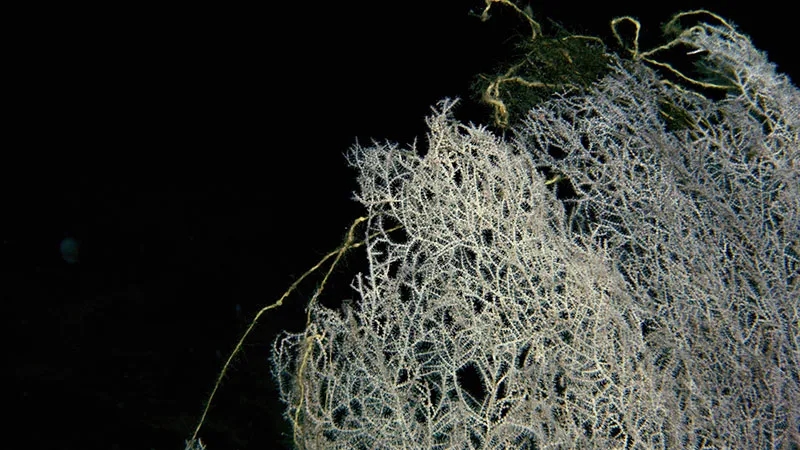Earth’s vast oceanic biodiversity remains largely unexplored, with only a fraction of an estimated two million total living marine species formally named and described. A significant challenge is the protracted delay, often spanning decades, between the initial discovery of a new species and its official publication.
Ocean Species Discoveries was established to address this critical gap, offering a high-quality, data-rich publication platform specifically tailored for concise marine invertebrate species descriptions. This revolutionary approach can significantly accelerate the timeline for new species descriptions, a vital advantage given the escalating threat of human-driven biodiversity loss, which risks species becoming extinct before scientists even know they exist.
The initiative is coordinated by the Senckenberg Ocean Species Alliance (SOSA), a project of the Senckenberg Research Institute and Natural History Museum Frankfurt aimed at facilitating global collaboration, offering technical support for species documentation, and promoting efficient taxonomic publishing.
The second major collection in the Ocean Species Discoveries had over 20 researchers working together to describe 14 new marine invertebrate species and two new genera from all over the world, including worms, mollusks, and crustaceans. They published their research in a scientific paper in Biodiversity Data Journal, a year after the project’s pilot publication.
“Our shared vision is making taxonomy faster, more efficient, more accessible and more visible,” the team said in their paper.





The newly established Discovery Laboratory at the Senckenberg Research Institute and Natural History Museum Frankfurt proved critical help in describing most of the new species. The Laboratory offers access to integrative research methods such as light and electron microscopy, confocal imaging, molecular barcoding, and micro-CT scanning, making it easy for researchers to produce the high-quality data necessary for robust species descriptions.
The animals studied in this project come from ocean depths ranging from 1 to over 6,000 meters. The deepest-living animal the researchers explored is Veleropilina gretchenae, a new species of mollusk that was recovered from the Aleutian Trench at a depth of 6,465 meters. It is one of the first species in the class Monoplacophora to have a high-quality genome published directly from the holotype specimen.

A landmark achievement in this collection is the anatomical description of the carnivorous bivalve Myonera aleutiana, which represents only the second bivalve species documented in detail using solely non-invasive micro-CT scanning. The process generated over 2,000 tomographic images, providing unprecedented clarity on the bivalve’s internal tissues and soft-body parts. This is the first study to offer detailed anatomy information on any Myonera species.

Its description also marks a new depth record: it was found at depths of 5,170–5,280 meters, about 800 meters deeper than any other documented Myonera individual.
One of the newly described species honours Johanna Rebecca Senckenberg (1716–1743), a naturalist and benefactor who supported science and medicine, which contributed to the forming of the Senckenberg Society for Nature Research. The amphipod Apotectonia senckenbergae was discovered in a mussel bed at the Galápagos Rift hydrothermal vent fields at a depth of 2,602 meters.


Some of the deep-sea inhabitants have curious appearances: the parasitic isopod Zeaione everta exhibits distinctive protuberances on the female’s back that resemble popped kernels of popcorn. The genus name, which derives from the corn genus Zea, reflects this resemblance. Found in the Australian intertidal zone, this species also represents a new genus.
The paper also sheds more light on known deep-sea species such as the tusk shell Laevidentalium wiesei, found at depths of more than 5,000 meters. The researchers found out it was carrying its own secret hitchhiker, a sea anemone attached to the shell’s anterior (concave) side. This is the first time an interaction of this kind is reported in the genus Laevidentalium.

Research article:
(SOSA) SOSA, Andrade LF, Boyko CB, Brandt A, Buge B, Dávila Jiménez Y, Henseler M, Hernández Alcántara P, Jóźwiak P, Knauber H, Marcondes Machado F, Martínez-Muñoz CA, Momtazi F, Nakadera Y, Qiu J-W, Riehl T, Rouse GW, Sigwart JD, Sirenko B, Souza-Filho JF, Steger J, Stępień A, Tilic E, Trautwein B, Vončina K, Williams JD, Zhang J (2025) Ocean Species Discoveries 13–27 — Taxonomic contributions to the diversity of Polychaeta, Mollusca and Crustacea. Biodiversity Data Journal 13: e160349. https://doi.org/10.3897/BDJ.13.e160349


























